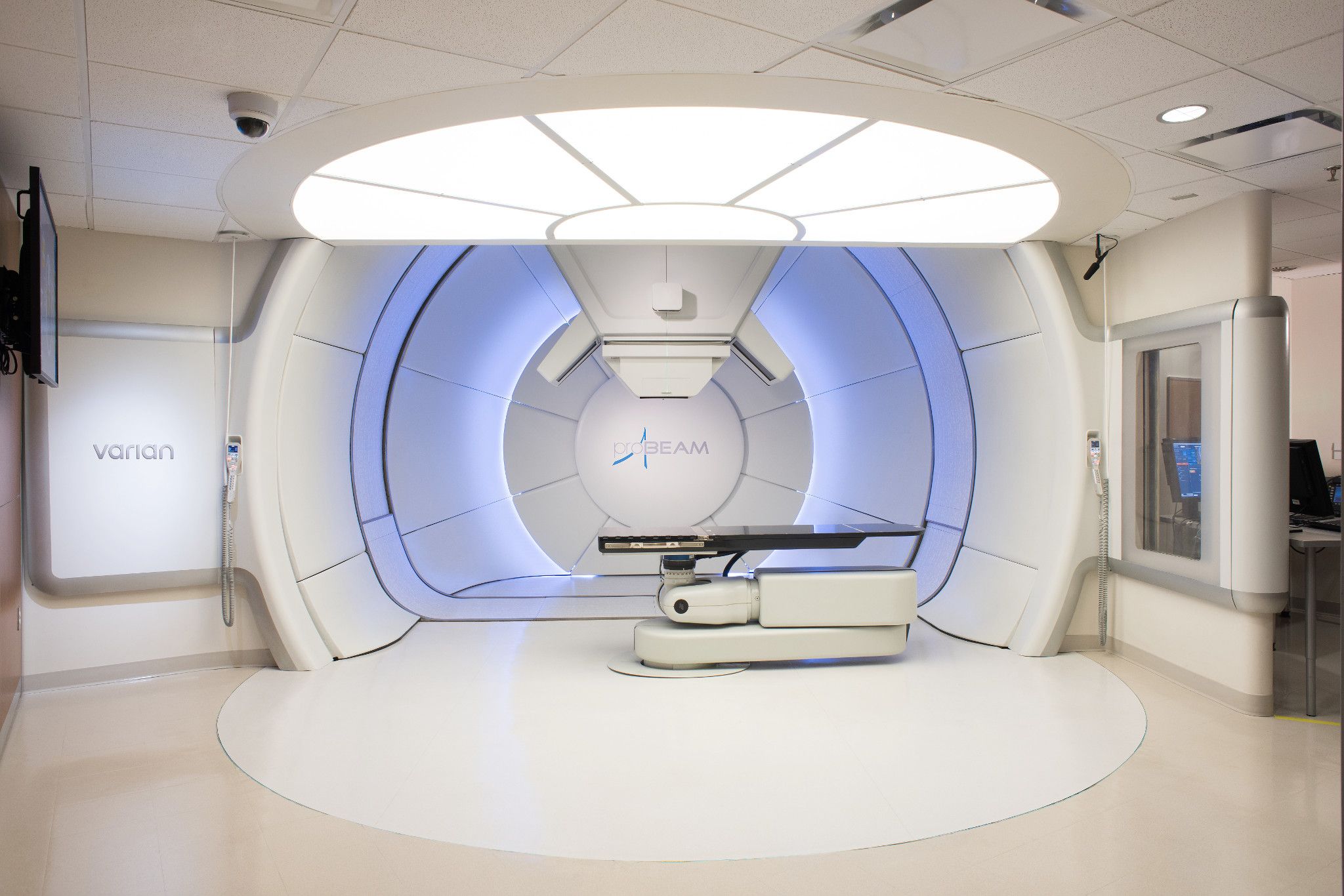Radiotherapy plays a critical role as a primary treatment for unresectable sarcomas (large bony sarcomas or large chordomas), small sarcoma metastases ( stereotactic body radiotherapy), as neoadjuvant or adjuvant in resectable sarcomas, or as palliative treatment in large symptomatic unresectable tumours. Read more about chordomas here.
In metastases to the lungs from other primary sarcoma sites, stereotactic body radiotherapy is highly effective and safe for eradication of these small spreads.
Radiotherapy plays a crucial role in the management of sarcomas, which are a diverse group of rare cancers that originate from the connective tissues, such as muscles, bones, and tendons.
- Adjuvant Treatment: After surgical removal of the primary tumor, radiation therapy may be employed to target any remaining cancer cells in the surrounding area.
- Neoadjuvant Treatment: In some cases, radiotherapy is administered before surgery. This approach aims to shrink the tumor and facilitate a more effective surgical resection.
- Palliative Care: For patients with advanced or metastatic sarcomas, radiotherapy can be used to alleviate symptoms and improve quality of life.
- Definitive treatment: In patients whom sarcomas cannot be removed, e.g. large sacral chordoma, pelvic Ewing’s etc, radiotherapy, particularly particle treatment with carbon or protons, can offer a good chance of cure.
- High-grade sarcomas have a propensity for lung metastases. Stereotactic radiotherapy can still cure some patients with limited sites of disease.
Here are some key points about radiotherapy for sarcomas:
- Types of Radiotherapy:
- External Beam Radiotherapy (EBRT): This is the most common type of radiotherapy for sarcoma. It involves directing radiation from outside the body toward the cancerous tumor. The patient typically lies on a treatment table, and a machine delivers the radiation precisely to the targeted area.
- EBRT can be given with xray (photons) or proton therapy. In Singapore, proton beam therapy can be used for chordoma, chondrosarcoma, spinal and paraspinal bone and soft tissue sarcoma, and retroperitoneal sarcoma. Read more about proton beam therapy for sarcomas here.
- Treatment Planning:
- Before starting radiotherapy, a detailed treatment plan is developed. This includes imaging studies, such as CT scans, to precisely locate the tumor and determine the optimal angles for radiation delivery.
- During simulation, if your tumour is near the diaphragm ( thoracic sarcoma, or retroperitoneal sarcoma), you may be asked to breathe slowly and regularly ( 4D CT scan) whereby your breathing cycle is imaged so that the tumour movement is tracked and delineated out for target planning.
- Sessions and Duration:
- Radiotherapy is usually administered in multiple sessions, referred to as fractions. The total number of sessions and the overall duration of treatment depend on factors such as the type and stage of sarcoma.
- Treatments are typically given daily over several weeks, allowing healthy cells to recover between sessions.
- For stereotactic body radiotherapy, treatments range from 1 to 5 sessions.
- For conventionally fractionated EBRT ( 3D, IMRT, VMAT or proton beam), treatments range from 20# to 35# ( 4 to 7 weeks).
- Side Effects:
- Radiotherapy may cause side effects, and these can vary from person to person.
- Acute side effects for cancer radiotherapy include fatigue, skin changes in the treated area and nausea.
- Most acute side effects are temporary and can be managed with supportive care.
- Long term side effects are dependent on area of irradiation. For thoracic radiotherapy, side effects include lung scarring, cardiac issues such as heart failure or ischemic heart disease. For extremity radiotherapy, lymphedema, muscles stiffness and skin changes are possible. For spinal or head and neck irradiation, nerve damage, mouth dryness and muscle stiffness are possible.
- Secondary cancers are possible but incidence is low.
- Combination with Other Treatments:
- Radiotherapy is often used in combination with surgery, chemotherapy, or both. The choice of treatment depends on factors such as the stage and type of cancer, as well as the overall health of the patient.
- Palliative Radiotherapy:
- In cases where the cancer is advanced and cannot be cured, radiotherapy may be used to relieve symptoms and improve the quality of life. This is known as palliative radiotherapy.
It’s important for individuals considering or undergoing radiotherapy for sarcomas to discuss the potential benefits and risks with their healthcare team, as well as to address any concerns or questions they may have about the treatment process




